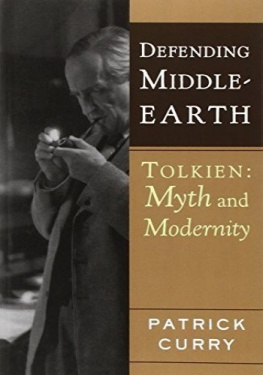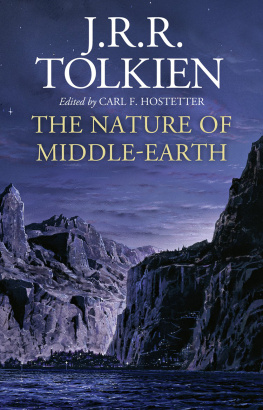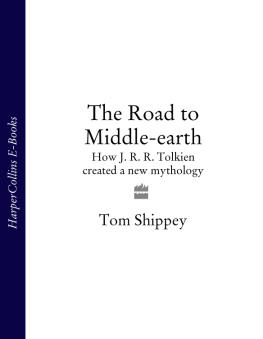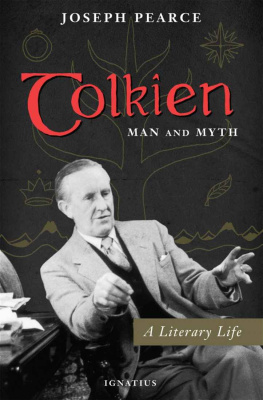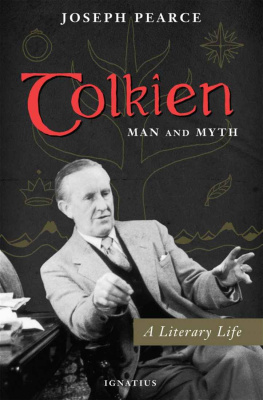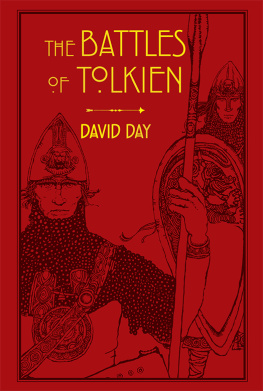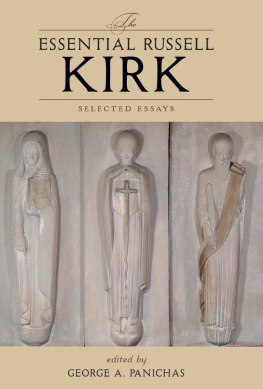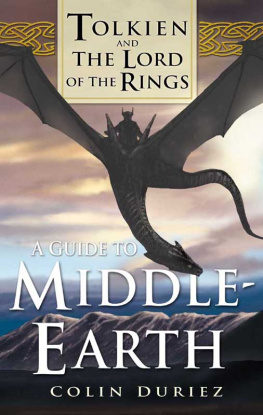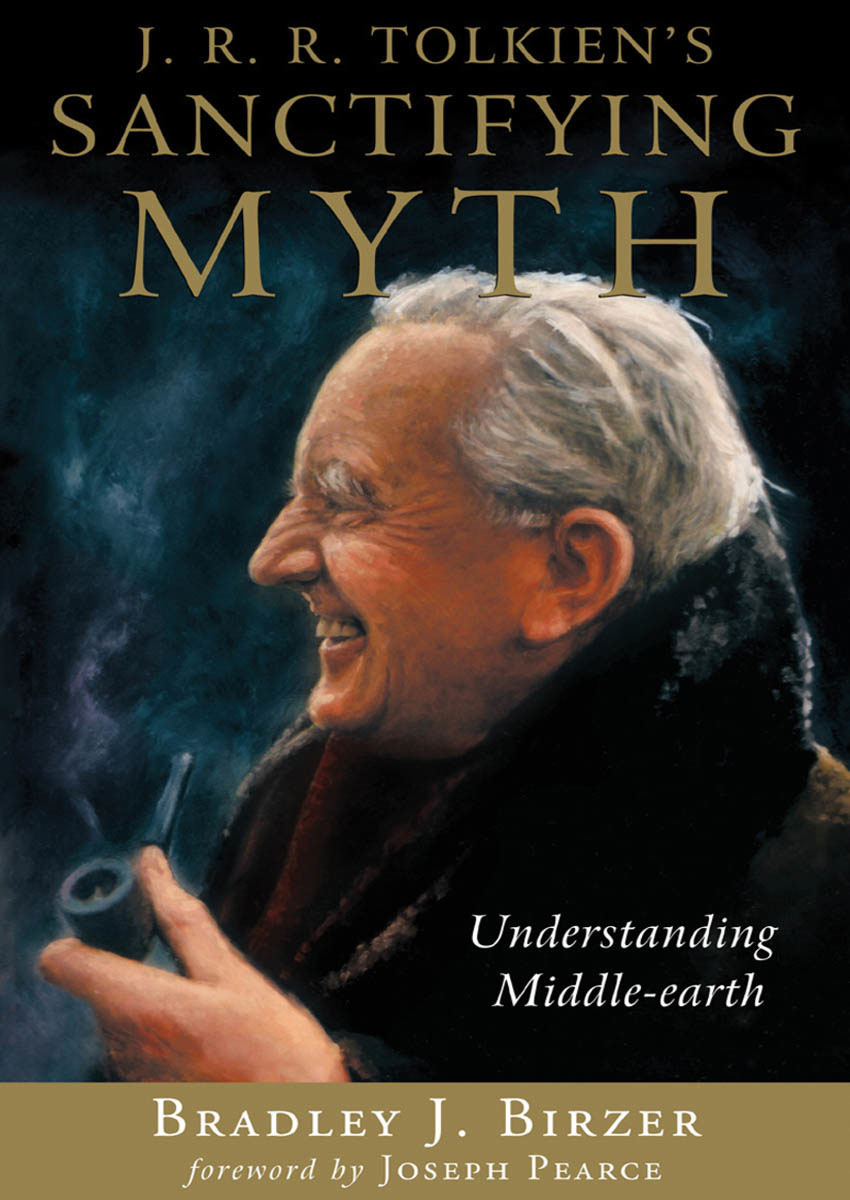J. R. R. Tolkiens
by Bradley J. Birzer
To Rita, Kevin, and Todd Birzer,
who journeyed with me into the heart of Mordor.
May we all meet in the Blessed Realm someday.
Table of Contents
Conclusion:
Foreword
The phenomenal popularity of Tolkiens Lord of the Rings continues to be greeted with anger and contempt by many self-styled literary experts. Rarely has a book caused such controversy and rarely has the vitriol of the critics highlighted to such an extent the cultural schism between the cliquish literary illuminati and the views of the reading public.
It is perhaps noteworthy that most of the self-styled experts amongst the literati who have queued up to sneer contemptuously at The Lord of the Rings are outspoken champions of cultural decon-struction and moral relativism. Most would treat the claims of Christianity in general, and of the Catholic Church in particular, with the same dismissive disdain with which they have poured scorn upon Tolkien. Indeed, their antagonism could be linked to the fact that Tolkiens myth is enriched throughout with inklings of the truths of the Catholic faith.
According to Tolkiens own scale of significance, expressed candidly in a letter written shortly after The Lord of the Rings was published, his Catholic faith was the most important, or most significant, influence on the writing of the work. It is, therefore, not merely erroneous but patently perverse to see Tolkiens epic as anything other than a specifically Christian myth. This being so, the present volume emerges as a valuable and timely reiteration of the profoundly Christian dimension in the work of the man who is possibly the most important writer of the twentieth century.
Professor Birzer grapples with the very concept of myth and proceeds to a discussion of Tolkiens philosophy of myth, rooted as it is in the relationship between Creator and creature, and, in consequence, the relationship between Creation and sub-creation. In his rigorously researched and richly written study, Professor Birzer helps us to understand the theological basis of the mythological world of Middle-earth and enables us to see that Tolkiens epic goes beyond mere fantasy to the deepest realms of metaphysics. Far from being an escapist fantasy, The Lord of the Rings is revealed as a theological thriller.
Tolkiens development of the philosophy of myth derives directly from his Christian faith. In fact, to employ a lisping pun, Tolkien is a misunderstood man precisely because he is a mythunderstood man. He understood the nature and meaning of myth in a manner that has not been grasped by his critics. It is this misapprehension on the part of his detractors that lies at the very root of their failure to appreciate his work. For most modern critics a myth is merely another word for a lie or a falsehood, something which is intrinsically not true. For Tolkien, myth had virtually the opposite meaning. It was the only way that certain transcendent truths could be expressed in intelligible form. This paradoxical philosophy was destined to have a decisive and profound influence on C. S. Lewis, facilitating his conversion to Christianity. It is interestingindeed astonishingto note that without J. R. R. Tolkien there might not have been a C. S. Lewis, at least not the C. S. Lewis that has come to be known and loved throughout the world as the formidable Christian apologist and author of sublime Christian myths.
Integral to Tolkiens philosophy of myth was the belief that creativity is a mark of Gods divine image in Man. God, as Creator, poured forth the gift of creativity to men, the creatures created in his own image. Only God can create in the primary sense, i.e., by bringing something into being out of nothing. Man, however, can sub-create by molding the material of Creation into works of beauty. Music, art, and literature are all acts of sub-creation expressive of the divine essence in man. In this way, men share in the creative power of God. This sublime vision found (sub)creative expression in the opening pages of The Silmarillion, the enigmatic and unfinished work that forms the theological and philosophical foundation upon which, and the mythological framework within which, The Lord of the Rings is structured.
The Silmarillion delved deep into the past of Middle-earth, Tolkiens sub-created world, and the landscape of legends recounted in its pages formed the vast womb of myth from which The Lord of the Rings was born. Indeed, Tolkiens magnum opus would not have been born at all if he had not first created, in The Silmarillion, the world, the womb, in which it was conceived.
The most important part of The Silmarillion is its account of the creation of Middle-earth by the One. This creation myth is perhaps the most significant, and the most beautiful, of all Tolkiens work. It goes to the very roots of his creative vision and says much about Tolkien himself. Somewhere within the early pages of The Silmarillion is to be found both the man behind the myth and the myth behind the man.
The myth behind Tolkien was, of course, Catholic Christianity, the True Myth, and it is scarcely surprising that Tolkiens own version of the creation in The Silmarillion bears a remarkable similarity to the creation story in the book of Genesis. In the beginning was Eru, the One, who made first the Ainur, the Holy Ones, that were the offspring of his thought, and they were with him before aught else was made. This, therefore, is the theological foundation upon which the whole edifice of Middle-earth is erected. Disharmony is brought into the cosmos when Melkor, one of the Holy Ones, or Archangels, decides to defy of the will of the Creator, mirroring the Fall of Satan. This disharmony is the beginning of evil. Again, Tolkiens myth follows the True Myth of Christianity with allegorical precision.
Shortly after describing the rebellion of Melkor, Tolkien introduces Sauron, the Dark Lord in The Lord of the Rings. Sauron is described as a spirit and as the greatest of Melkors, alias Morgoths, servants: But in after years he rose like a shadow of Morgoth and a ghost of his malice, and walked behind him on the same ruinous path down into the Void.


